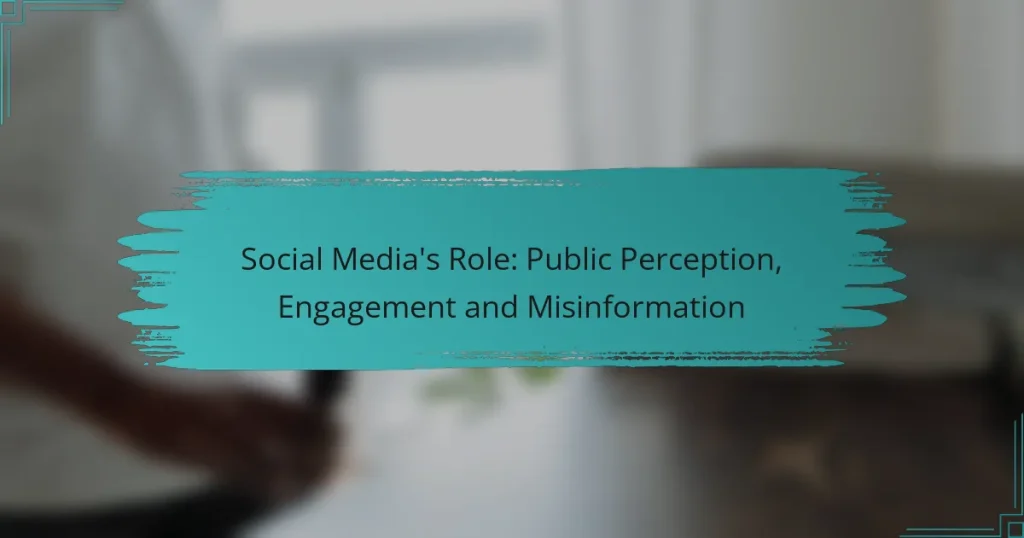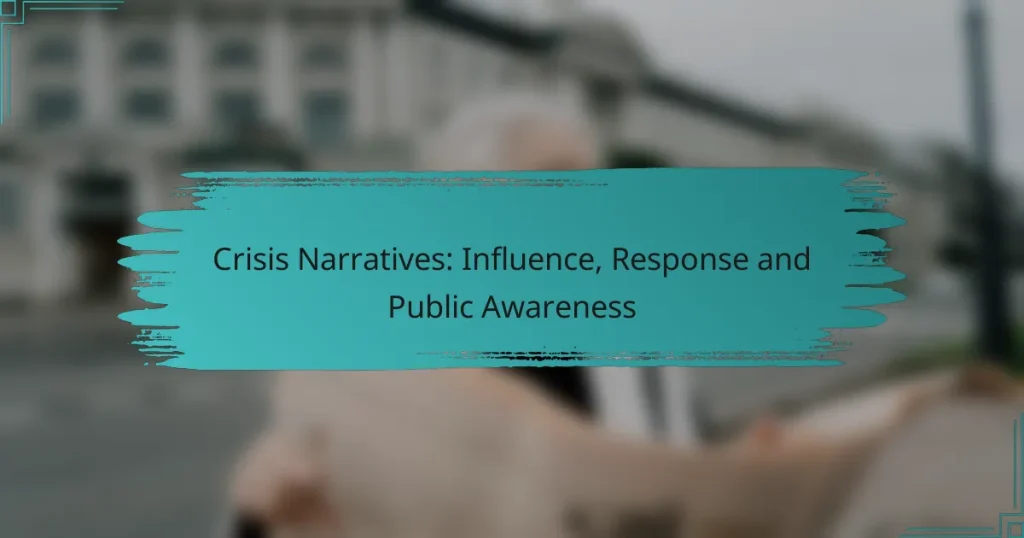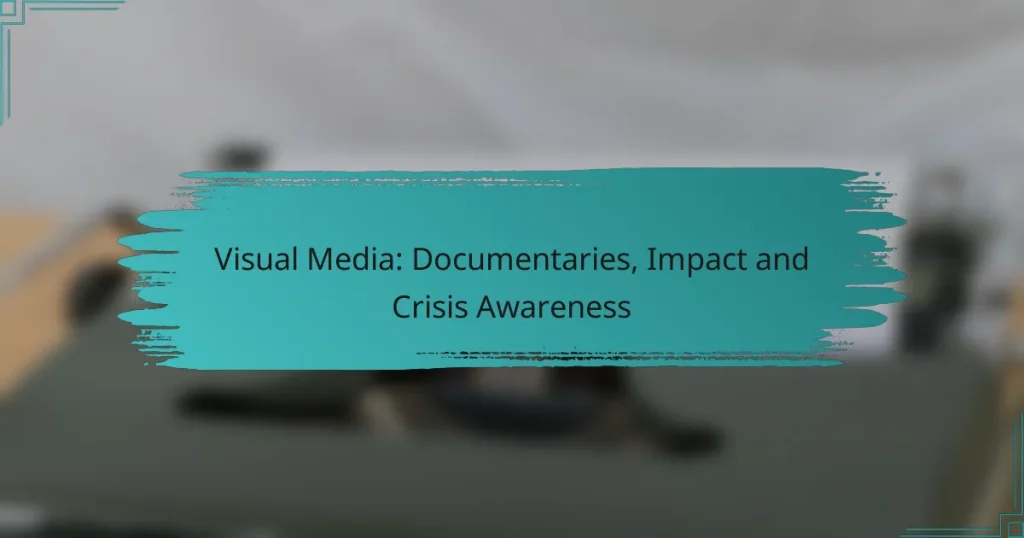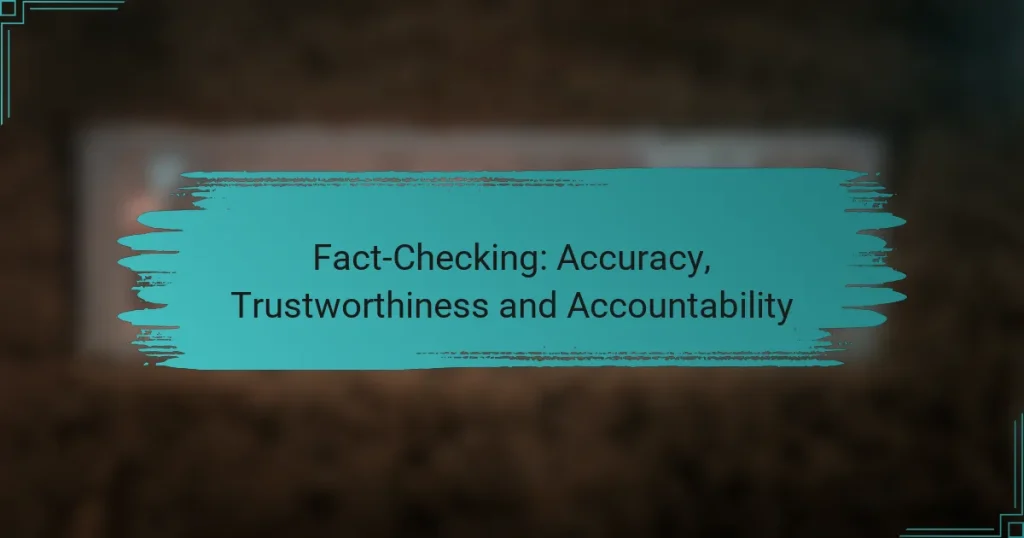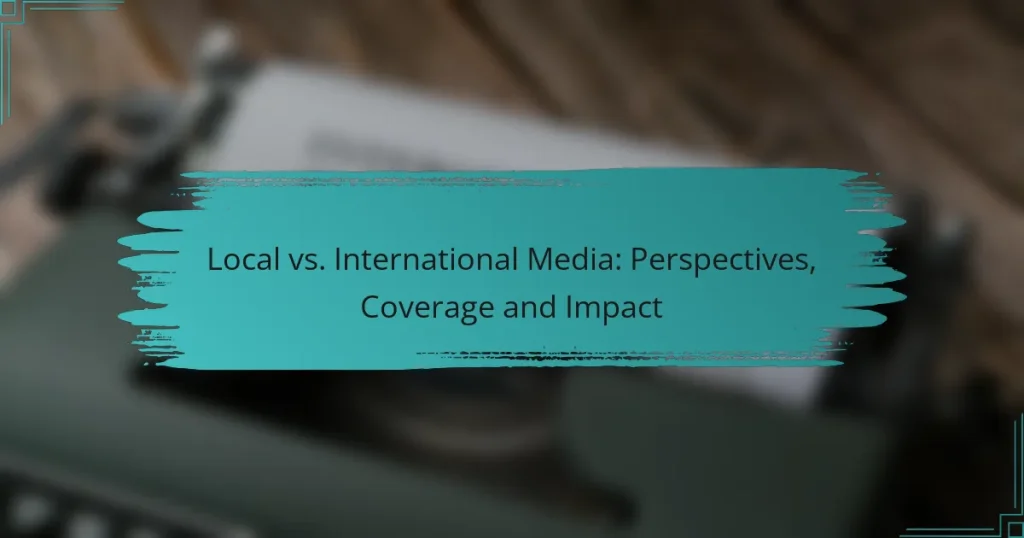Media coverage is essential in crisis management, particularly in South Africa, as it shapes public awareness and influences the actions of authorities. Clear and timely communication through various media channels can enhance response efforts, while the spread of misinformation can worsen crises. Influential outlets like News24, eNCA, and TimesLIVE play a pivotal role in delivering updates and analysis that affect public perception and government actions during critical times.
Crisis Narratives: Influence, Response and Public Awareness
Engaging the Audience: Storytelling, Connection and Reporting Techniques
Visual Media: Documentaries, Impact and Crisis Awareness
Ethics in Reporting: Sensationalism, Sensitivity and Accuracy
Fact-Checking: Accuracy, Trustworthiness and Accountability
Local vs. International Media: Perspectives, Coverage and Impact
How does media coverage impact crisis management in South Africa?
Media coverage plays a crucial role in crisis management in South Africa by shaping public awareness and influencing the actions of authorities. Effective communication through various media channels can enhance response efforts, while misinformation can exacerbate crises.
Influence on public perception
Media coverage significantly affects how the public perceives a crisis. Positive or accurate reporting can foster trust and encourage community solidarity, while sensationalized or misleading information can lead to panic and confusion. For example, during health emergencies, clear messaging about safety measures can promote compliance among citizens.
Public perception is often shaped by the frequency and tone of media reports. Continuous updates can keep the community informed, but overly negative coverage may create a sense of hopelessness. Balancing information with constructive narratives is essential for maintaining a resilient public outlook.
Role in government response
The media serves as a critical conduit between the government and the public during crises. Timely reporting can prompt government action, ensuring that officials respond quickly to emerging situations. For instance, media exposure of infrastructure failures can lead to immediate governmental interventions.
However, the government must manage its relationship with the media carefully. Providing accurate and timely information can help mitigate misinformation, while a lack of transparency may result in public distrust. Establishing a clear communication strategy is vital for effective crisis management.
Effect on community resilience
Media coverage can enhance community resilience by promoting awareness and preparedness. Informative reporting on potential risks and available resources empowers communities to take proactive measures. For example, coverage of disaster preparedness initiatives can encourage local participation and engagement.
Moreover, media can facilitate community support networks by highlighting stories of solidarity and recovery. This can inspire collective action and foster a sense of belonging, which is crucial during challenging times. Encouraging positive narratives can strengthen community ties and resilience in the face of adversity.
What are the best practices for effective crisis communication?
Effective crisis communication involves clear, transparent, and timely messaging to manage public perception and maintain trust. Key practices include ensuring accuracy in information, providing regular updates, and actively engaging with stakeholders throughout the crisis.
Transparency and accuracy
Transparency and accuracy are crucial for maintaining credibility during a crisis. Organizations should provide clear information about the situation, including what is known and what remains uncertain. This honesty helps build trust with the audience.
To achieve transparency, avoid jargon and communicate in plain language. For example, if a company faces a product recall, it should clearly state the reasons for the recall, the potential risks, and the steps being taken to address the issue.
Timely updates
Providing timely updates is essential for keeping stakeholders informed and reducing speculation. Regular communication, even if there are no new developments, reassures the public that the situation is being monitored closely.
Establish a schedule for updates, such as every few hours or daily, depending on the crisis’s severity. Utilize multiple channels, including social media, press releases, and direct emails, to reach a wider audience effectively.
Engagement with stakeholders
Engaging with stakeholders is vital for understanding their concerns and addressing them promptly. This includes responding to inquiries, acknowledging feedback, and providing avenues for dialogue.
Consider creating a dedicated communication team to handle stakeholder interactions during a crisis. This team should be trained to listen actively and respond empathetically, ensuring that stakeholders feel heard and valued.
Which media outlets are most influential during crises?
During crises, certain media outlets play a crucial role in shaping public perception and disseminating information. Outlets such as News24, eNCA, and TimesLIVE are particularly influential in South Africa, providing timely updates and analysis that can significantly impact public response and government action.
News24
News24 is one of South Africa’s leading online news platforms, known for its comprehensive coverage of breaking news and crises. It offers real-time updates, in-depth articles, and expert opinions, making it a go-to source for many during emergencies.
In times of crisis, News24 focuses on delivering accurate information quickly, which is essential for public safety. Users can expect to find live blogs, video reports, and interactive features that enhance understanding of the situation.
eNCA
eNCA (eNCA.com) is a prominent news channel in South Africa that provides 24-hour news coverage, particularly during crises. Its live broadcasts and online updates ensure that viewers receive immediate information about unfolding events.
eNCA often features expert commentary and analysis, helping the public make sense of complex situations. The channel’s commitment to fact-checking and responsible reporting is crucial during times of uncertainty.
TimesLIVE
TimesLIVE is the digital platform of the Sunday Times, offering a blend of news, opinion, and analysis. It is recognized for its investigative journalism and in-depth reporting, especially during significant crises.
During emergencies, TimesLIVE provides detailed articles that explore the implications of events, often including perspectives from various stakeholders. This outlet is valuable for readers seeking a deeper understanding of the broader context surrounding a crisis.
How can organizations prepare for media coverage during a crisis?
Organizations can prepare for media coverage during a crisis by establishing a comprehensive crisis communication strategy. This involves planning ahead to ensure timely and accurate information dissemination, which can help manage public perception and mitigate damage.
Developing a crisis communication plan
A crisis communication plan outlines the procedures for addressing media inquiries and public statements during a crisis. Key elements include identifying potential crises, determining communication channels, and establishing a response timeline.
Organizations should regularly review and update their plans to reflect changes in personnel, technology, and potential risks. Conducting simulation exercises can also help staff practice their roles and refine the plan.
Media training for spokespeople
Media training equips designated spokespeople with the skills needed to effectively communicate with journalists during a crisis. Training should cover key messaging, interview techniques, and how to handle difficult questions.
Regular practice sessions can help spokespeople become comfortable in front of cameras and microphones, ensuring they convey confidence and clarity when addressing the media.
Establishing media relationships
Building strong relationships with journalists and media outlets can facilitate smoother communication during a crisis. Organizations should engage with media professionals proactively, providing them with relevant information and insights even outside of crisis situations.
Maintaining a media contact list and regularly updating it can ensure that spokespeople reach the right individuals quickly when a crisis arises. This can lead to more favorable coverage and a better understanding of the organization’s perspective.
What role does social media play in crisis coverage?
Social media serves as a crucial platform for real-time updates and information sharing during crises. It enables rapid communication between authorities, media, and the public, often shaping the narrative and response to unfolding events.
Real-time information dissemination
Social media platforms allow for immediate sharing of information, often within seconds of an event occurring. This rapid dissemination can include updates from official sources, eyewitness accounts, and multimedia content, providing a comprehensive view of the situation as it develops.
For instance, during natural disasters, agencies like the National Weather Service utilize Twitter to issue alerts and updates, reaching millions quickly. This immediacy can be critical in guiding public safety measures and responses.
Public engagement and feedback
Social media facilitates direct interaction between the public and organizations involved in crisis management. Users can share their experiences, ask questions, and provide feedback, which can be invaluable for authorities to gauge public sentiment and needs.
Engagement can also lead to community-driven initiatives, such as local fundraising efforts or volunteer coordination during emergencies. However, misinformation can spread quickly, so it is essential for organizations to monitor platforms actively and correct false narratives.
Influence of social media influencers
Social media influencers can significantly impact public perception during crises by amplifying messages and shaping narratives. Their large followings allow them to reach diverse audiences, often faster than traditional media outlets.
For example, influencers may promote safety tips or share verified information from credible sources, helping to combat misinformation. However, organizations should be cautious and ensure that influencers they collaborate with are credible and align with the message being communicated.
How do cultural factors influence media coverage of crises in South Africa?
Cultural factors significantly shape media coverage of crises in South Africa by affecting how stories are framed and which narratives are prioritized. The country’s rich diversity and complex history play a crucial role in determining public perception and media trust during emergencies.
Language diversity
South Africa is home to multiple official languages, including Zulu, Xhosa, Afrikaans, and English. This linguistic diversity influences media coverage, as outlets may cater to specific language groups, potentially leading to fragmented narratives. For instance, a crisis reported in English may not reach non-English speakers, limiting their access to vital information.
Media organizations often face the challenge of ensuring that coverage is inclusive and accessible. Providing translations or summaries in various languages can help bridge communication gaps and foster a more informed public.
Historical context of media trust
The historical relationship between media and the public in South Africa affects how crises are reported and received. During apartheid, media was often seen as a tool of the state, leading to skepticism about its credibility. This legacy continues to influence public trust, with many communities questioning the motives behind media narratives during crises.
To improve trust, media outlets must demonstrate transparency and accountability in their reporting. Engaging with local communities and incorporating their voices can enhance credibility and foster a more accurate representation of events.
Community-specific narratives
Different communities in South Africa have unique experiences and perspectives that shape their understanding of crises. Media coverage that fails to acknowledge these specific narratives may overlook critical issues affecting marginalized groups. For example, urban communities may have different concerns during a health crisis compared to rural areas.
Media organizations should strive to include diverse viewpoints in their reporting. Collaborating with local leaders and organizations can ensure that coverage reflects the realities of various communities, ultimately leading to more effective communication during crises.
